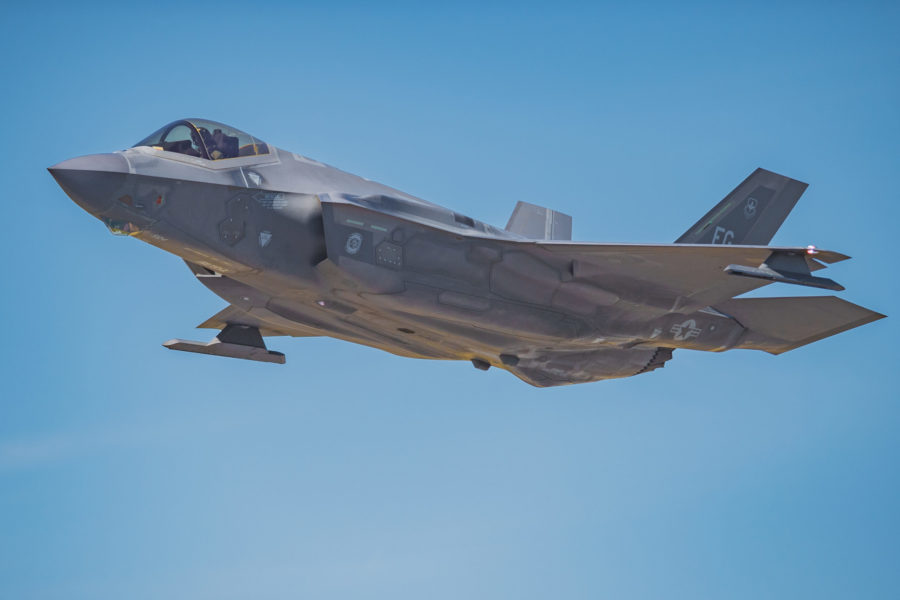BAE Systems has received a $491 million contract from Lockheed Martin to produce AN/ASQ-239 electronic warfare suites for the Block 4 version of the F-35 fighter, the company announced April 3. The award follows a $493 million contract in December 2022.
Meanwhile, Lt. Gen. Michael Schmidt, director of the F-35 Joint Program Office, said the F-35 Tech Refresh 3, which will underwrite the new EW suite, will be ready in 2024.
BAE’s work will be done in support of Lot 17 F-35s, with production under the contract starting in mid-2024 and continuing into 2025. The company did not say how many suites the contract covers. BAE has delivered 1,200 F-35 EW systems to date, it noted in a release. The suites are shipped to Lockheed’s Fort Worth, Texas facilities, where they are installed on production aircraft, a BAE spokesman said.
The previous award covered “development and maturation of the Block 4 EW baseline,” the company said at the time, while the new award covers production.
The updated EW suite is considered one of the centerpieces of the Block 4 upgrade, made possible by the Tech Refresh 3—called TR-3 for short—which includes improvements to the aircraft’s processor and other upgrades which recently entered flight testing.
Speaking with reporters at the Navy League’s Sea-Air-Space conference in National Harbor, Md., Schmidt said he feels confident that TR-3 will deliver in 2024.
“I stand behind that window,” he said.
“We were late in hardware development and delivery. The hardware now is there, it’s reliable. … The yield has been a little tough, but it’s been a lot better in the last few weeks, which makes a difference because we’re feeding the labs, the flight test aircraft and the production line,” Schmidt said, adding that contractors and program officials have been working on getting TR-3 into and through testing “seven days a week since Labor Day weekend.”
The AN/ASQ-239, which works in both the radio-frequency and infrared parts of the spectrum, includes “significantly upgraded hardware and software that improves sensing and signal-processing capabilities,” the company said. The improved sensors will increase the F-35’s ability to detect “difficult-to-observe threats” as well as process more threats simultaneously. The improvements include the Digital Channelized Receiver Techniques Generator and Tuner Insertion Program, or DTIP.
The upgrade also includes the Non-Intrusive Electronic Warfare Test Solution (NIEWTS) fault isolation and diagnostics capability. The NIEWST is meant to reduce maintenance costs through more precise troubleshooting.
On its website, BAE said the improved AN/ASQ-239 delivers full functionality “in a smaller footprint, reducing volume and power requirements and creating space for future upgrades,” as well as “improved reliability and maintainability,” with an architecture to allow “continuous capability development,” which allows rapid future upgrades.
“The flexibility of our active production line will allow us to seamlessly transition to the Block 4 design without skipping a beat,” Chris Rossi, BAE director of F-35 production, said in a press release. The system is designed and manufactured at BAE’s Manchester and Nashua, N.H., facilities.
BAE said the AN/ASQ-239 “provides F-35s with fully integrated offensive and defense EW capabilities, including long-range threat warning, self-protection, and targeting support. It provides 360-degree, full-spectrum situational awareness and rapid-response capabilities—allowing the F-35 to evade, engage, counter, and jam threats, and reach well-defended targets.”
The company also builds the F-35’s aft fuselage and vehicle management computer and makes the Eagle Passive Active Warning and Survivability System (EPAWSS), which will equip the F-15E and F-15EX fighters.


